
Browse our handpicked selection of vehicles that currently carry a very favorable book value in relation to where they are priced.
If you are looking for a vehicle that could help relieve some negative equity pain in your current vehicle, these selections could help get you on your way.
Maybe you just want to make a great buy and purchase a vehicle priced well under current book value. Taylor's AutoMax is here to help! Click here!
Sincerely,
Your Taylor's Auto Max Team
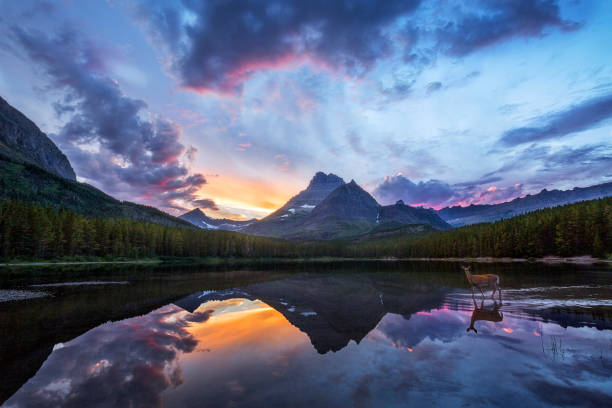
It’s summertime in Montana and there’s no better way to spend the long, hot days than taking a road trip to somewhere new! To help make your summer adventure spectacular, we’ve complied a list of the 20 best destinations in Montana to visit within driving distance from our home in Central Montana, in order from closest to farthest in distance. Each trip can be made in 4 hours or less from the city of Great Falls. Make a plan to hit multiple stops on the ride, or take your time and spend a weekend at each place to really get the full experience they each have to offer!
1. Fort Benton – 42 miles (approx. 45 minute drive)
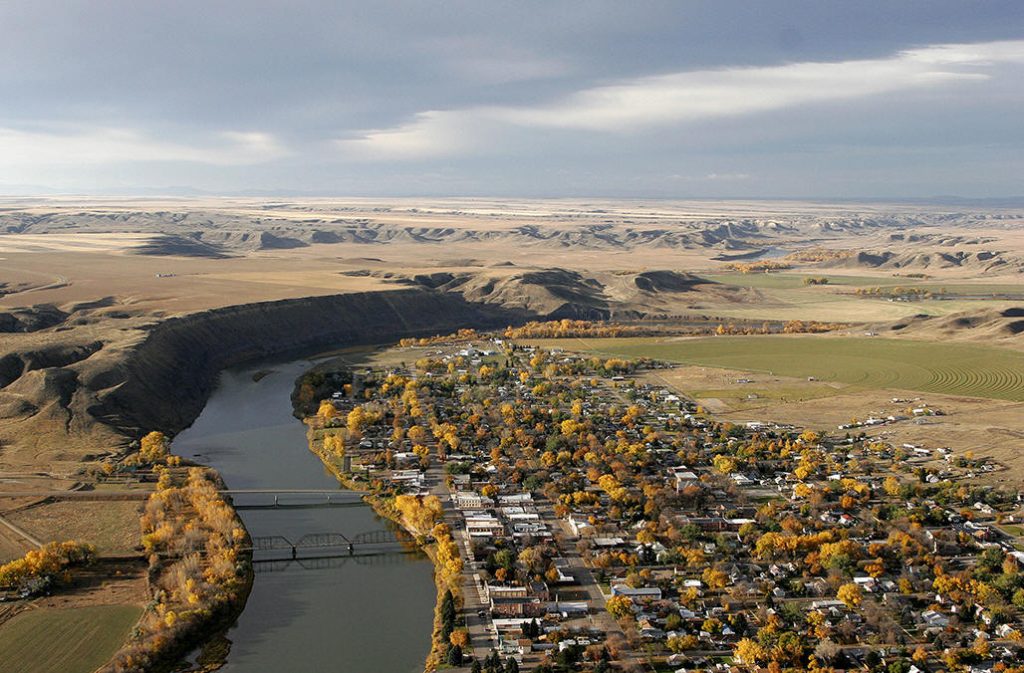
Drive through vast open country, past miles of wheat fields, herds of deer and antelope, and enjoy a view where you can see forever in any direction. You’ll soon understand why Forbes named Fort Benton as one of the fifteen “prettiest towns in America” and National Geographic Traveler recommends visiting Fort Benton.
If you love history, Fort Benton is definitely a place you’ll want to check out! The city’s waterfront area, the most important aspect of its 19th century growth, was designated the Fort Benton Historic District, a National Historic Landmark, in 1961. The city features museums and historic sites like the Historic Old Fort Benton, The Starr Gallery of Western Art, The Museum of the Northern Great Plains, The Hornaday Smithsonian Buffalo and Dean & Donna Strand Western Art Gallery, the Homestead Village, The Museum of the Upper Missouri, and lastly, Upper Missouri River Breaks National Monument Interpretive Center.
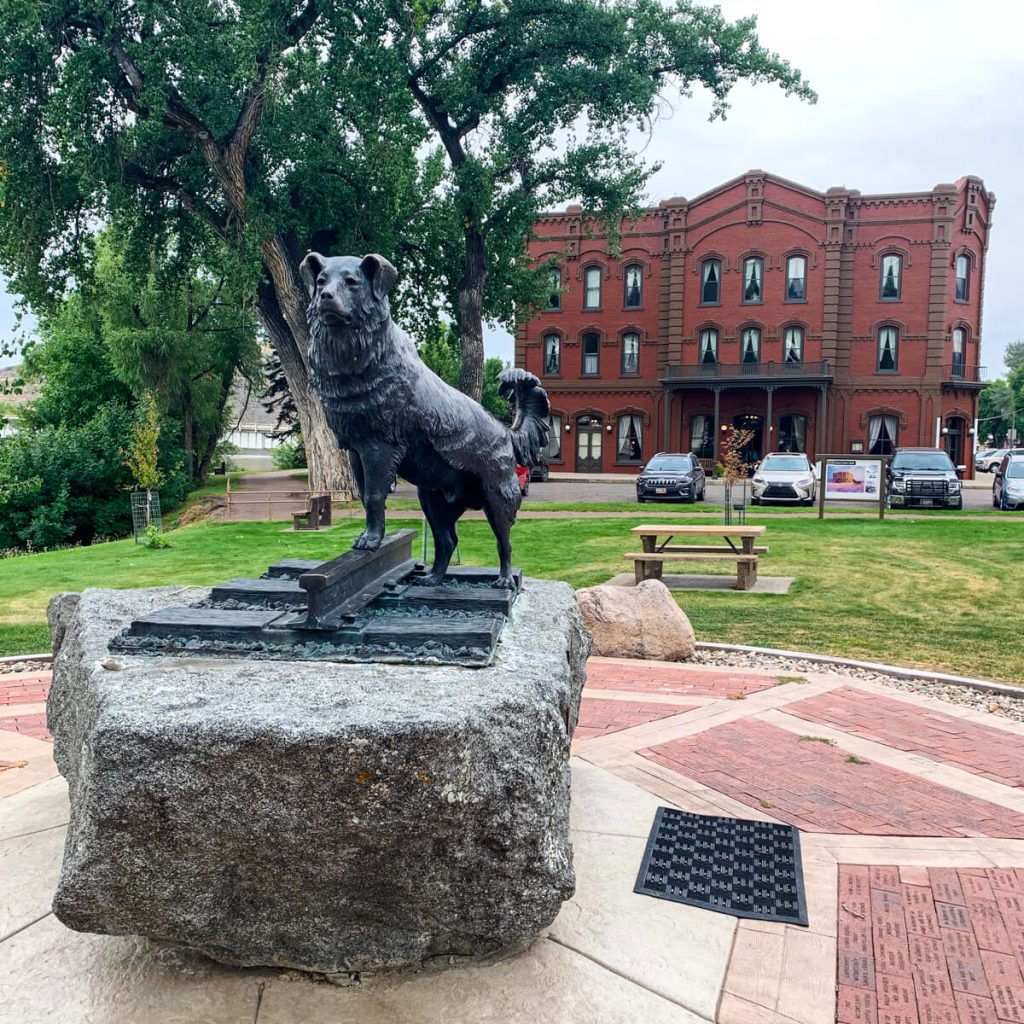
You can also visit the state of Montana’s Lewis and Clark Memorial in Fort Benton, and explore other landmarks like the Grand Union Hotel, the Shep Memorial, the Fort Benton Bridge, and the Choteau County Courthouse. With a population just shy of 1,500, you can expect quiet, open roads, little to no wait times, and an occasional friendly face.
2. Choteau – 52 miles (approx. 55 minute drive)
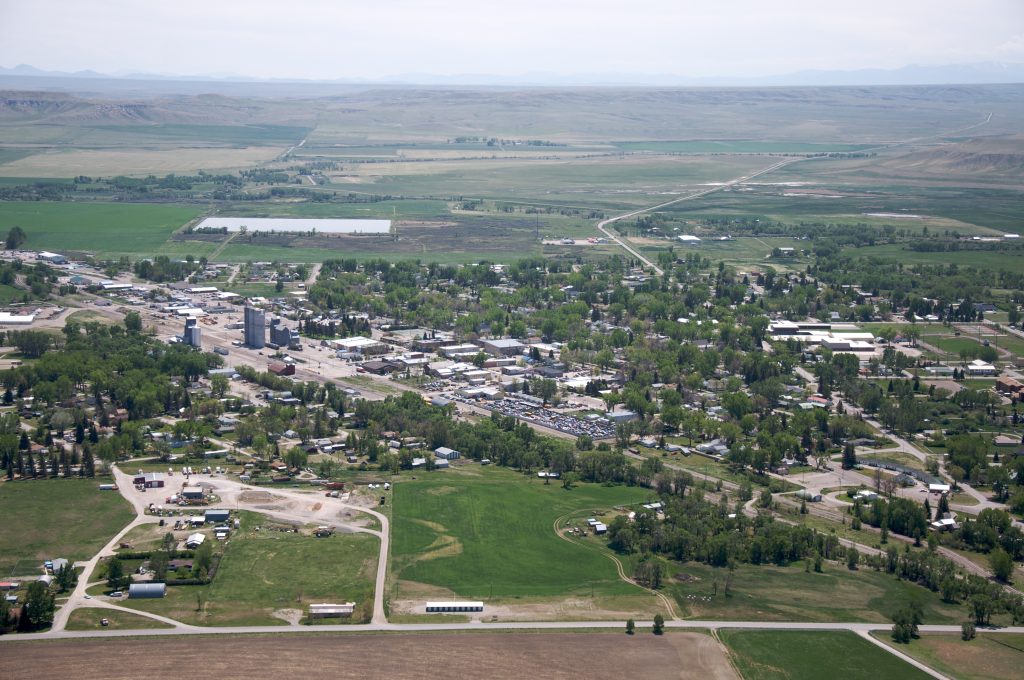
This city, with a population of approximately 1,700 residents, is another small town on our list, but it’s definitely worth the visit! The town is named for French fur merchant, trader and explorer Pierre Chouteau, Jr., who is also the namesake of Chouteau County, Montana, where you can find our last destination, Fort Benton. Choteau, like Fort Benton, is a county seat, meaning the Teton County Courthouse can be found right in the middle of town.
Things to see in Chouteau also include the Old Trail Museum, the Soroptimist Walking Path, and The Montana Dinosaur Center, a two-story paleontology research center and museum that offers real dinosaur fossil digs from May – September. Chouteau is also home to Freezeout Lake Wildlife Management Area, one of the world’s premier bird-watching locations, with over 200 species of birds observed her every year.
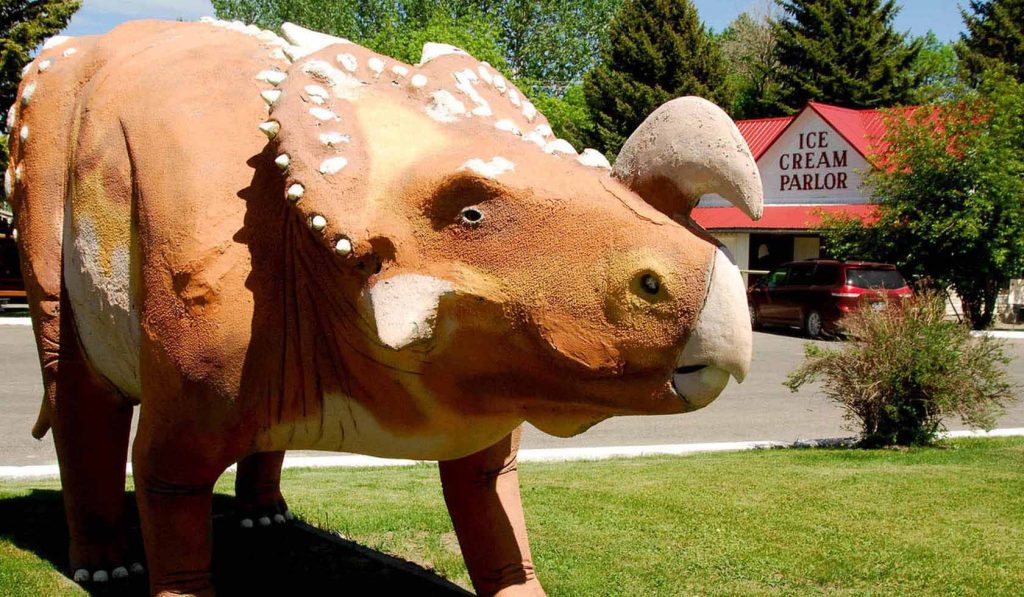
You can find great spots for various outdoor recreation, like hiking, horseback riding, hunting, and fishing. In the winter, Teton Pass Ski Resort, about 20 miles north of Chouteau, is a great place to ski and snowboard, then warm up in the log cabin after with some hot chocolate.
3. Holter Lake/Gate of the Mountains – 59 miles (approx. 1 hour and 5 minute drive)

It was Meriwether Lewis of Lewis and Clark fame who aptly named the Gates of the Mountains. As you begin to explore the Gates of the Mountains and Holter Lake area, you’ll be stunned by its beauty and soon come to realize why Lewis gave it this title. Lewis named it Gates of the Mountains due to the towering cliffs bordering the Missouri River that appear to open and close as you navigate the turns in the river. At that time, the river was not yet dammed, making the cliffs even more dramatic than they appear today.
Though the Missouri River has since been dammed, raising the water levels, “the Gates” are still breathtaking, and the dam has created one of our favorite summertime recreation spots in Montana: Holter Lake reservoir, a 24-mile section of the Missouri River running from Upper Holter Lake (southern end) to Lower Holter Lake (northern end).
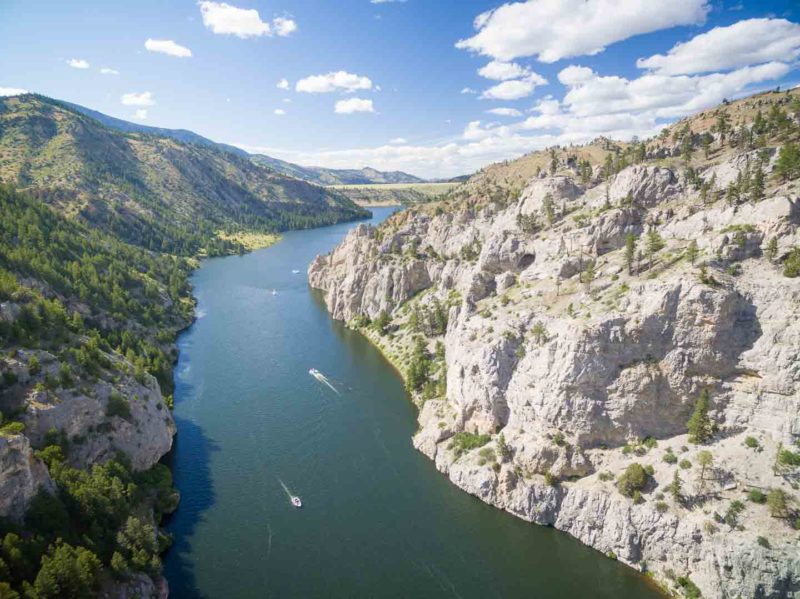
The over 28,000 acres and over 50 miles of trails that make up the Gates of the Mountains Wilderness Area border the Missouri River heading north from Upper Holter Lake. The pristine, wild, and roadless wonder of the entire wilderness area can be accessed from stops along the southern portion of Holter Lake. The lake offers the perfect spot for boating, kayaking, fishing, camping, and soaking in the sun and views of the Gates under the big sky. A 7-mile, guided boat tour of the Gates of the Mountains can be purchased to view “the Gates,” and learn it’s history.
4. Helena – 90 miles (approx. 1 hour and 30 minute drive)

One and a half centuries ago, Helena became the “Queen City of the Rockies” with the boom brought on by the 1864 gold strike. Helena grew along Last Chance Gulch and in 1875 became the Montana territorial capital. Today the state capital’s grand architecture, numerous museums and historic sites offer a real glimpse into the rich and deep history of the city. Helena also boasts a vibrant cultural center with a busy event calendar, eclectic shopping, art galleries, terrific local bands, great restaurants, local microbreweries, and an epic trail system.
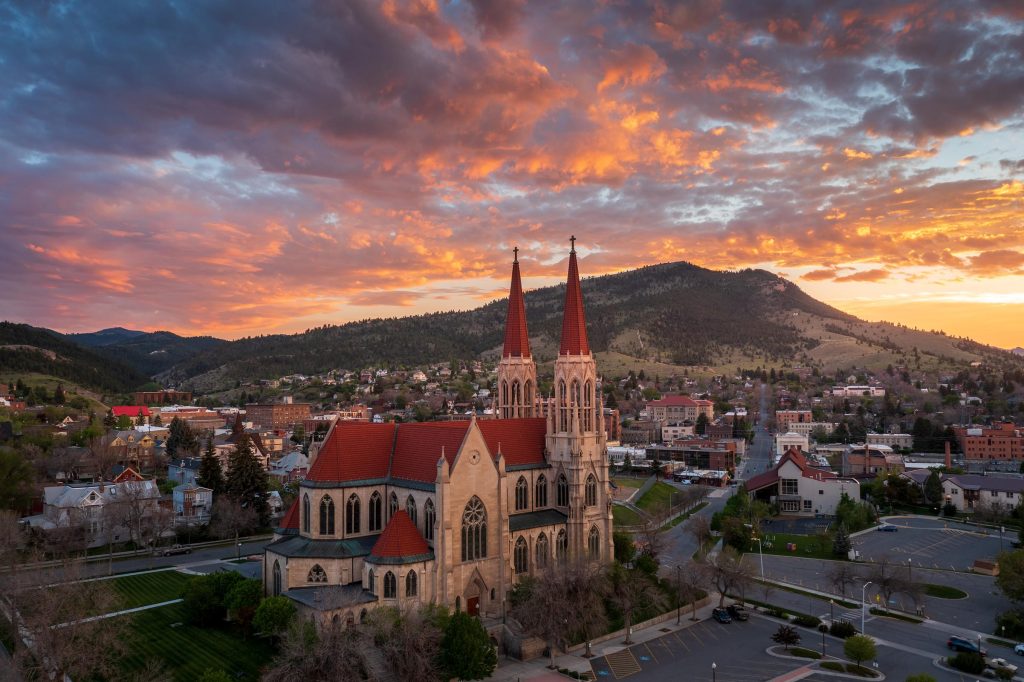
Stroll around Last Chance Gulch and the Downtown Pedestrian Mall, or take a visit to the state’s capitol building. Take a Hike at Mount Helena City Park, or step back in history at Reeder’s Alley or the Montana Historical Society. Helena also features the Montana Military Museum, the Holter Museum of Art, and an interactive science center, ExplorationWorks. After you do all your exploring around town, take a soak in the Broadwater Hot Springs and Spa.
5. Havre – 113 miles (approx. 1 hour and 55 minute drive)
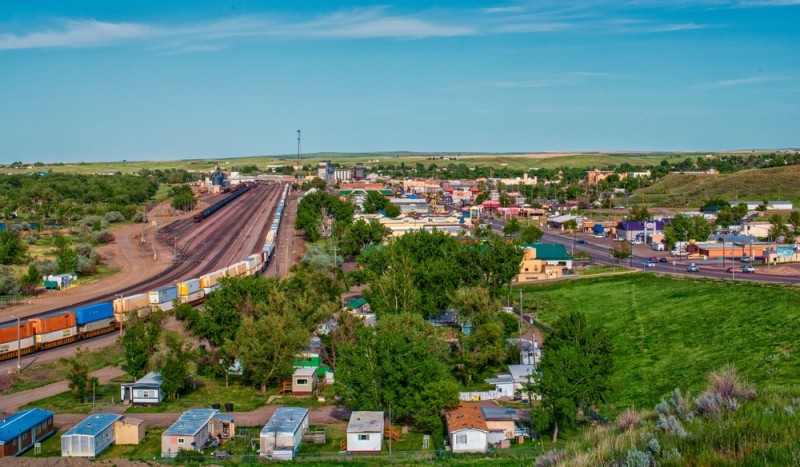
Havre is a rural agricultural community located on Highway 2 in North Central Montana. This area of mountains and plains offers a year-round retreat for nature lovers, recreation enthusiasts and history buffs. Besides recreation, Havre is also rich in cultural attractions ranging from concerts, live theater, museums, shops, galleries, numerous sporting activities and events.
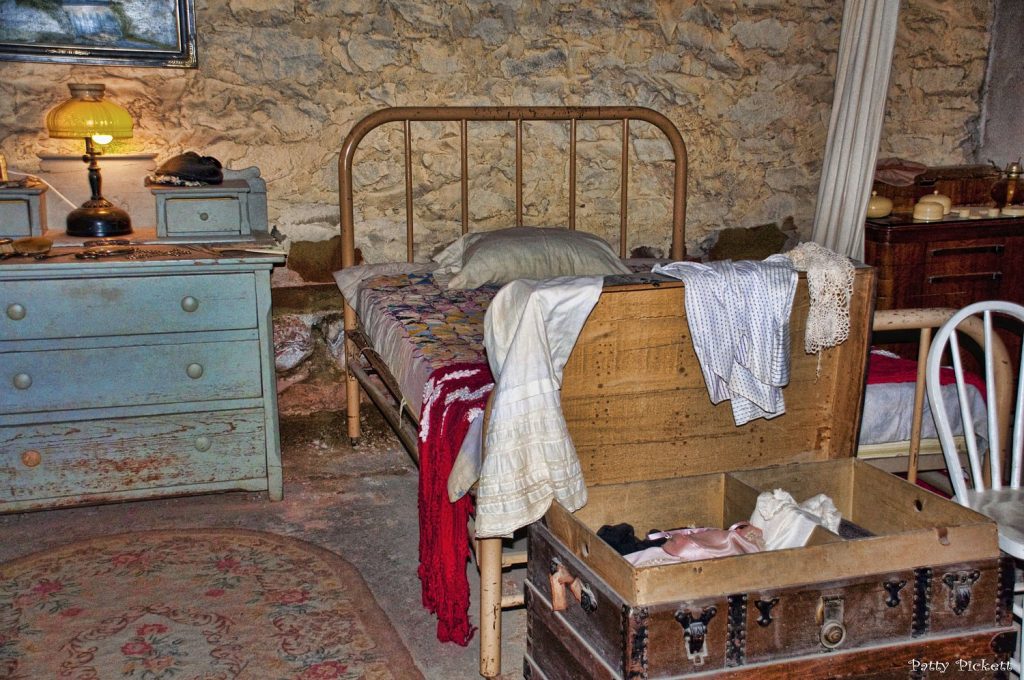
Another county seat city, Havre is home to the Hill County Courthouse, and the United States Historic Post Office and Courthouse. Some other places to check out include the Wahkpa Chu’gn Archaeological site, Fort Assiniboine, and the Highline Heritage Resources Historic Homes. While you’re there, be sure to explore the underground tunnels of Havre, Beneath the Streets. See first hand the commerce of early days on the wild and wooly frontier. Tour the Sporting Eagle, Wah Sing Laundry, Shorty Young’s Office, Gourley Bothers Bakery and more. Other museums in Havre include the H.E. Clack Historical Museum, the Old Library Gallery, and the Blaine County Museum can be found in nearby Chinook.
6. Glacier National Park – 146 miles (approx. 2 hour and 25 minute drive)
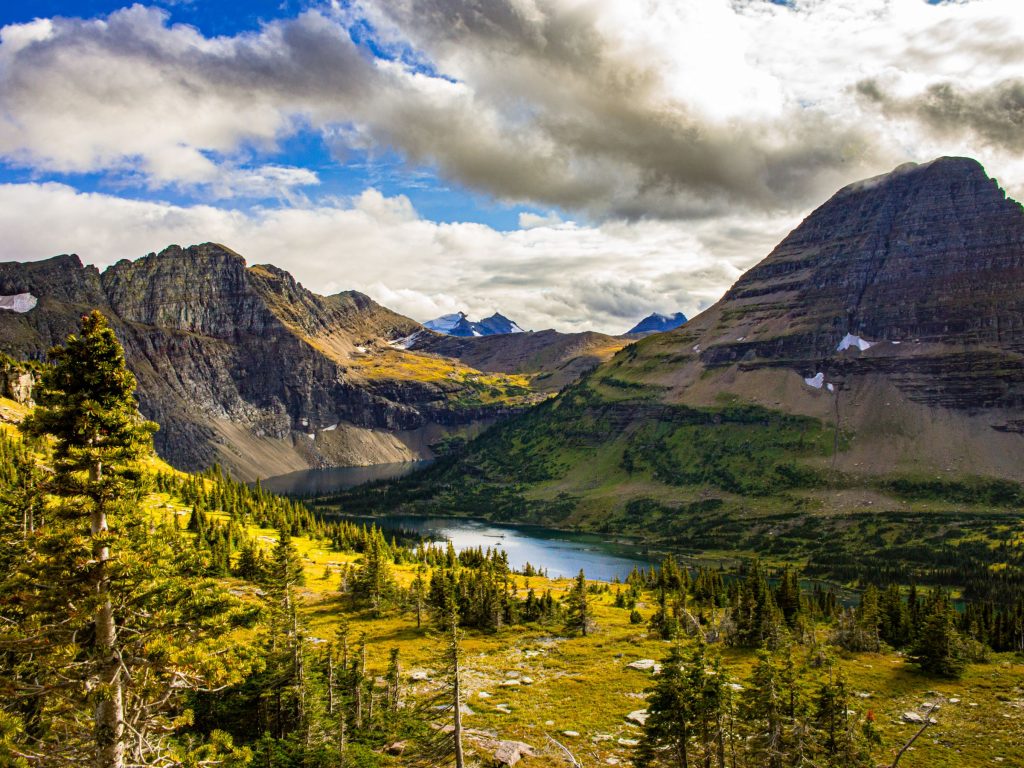
Established as a National Park in 1910, Glacier National Park is a land of mountain ranges carved by prehistoric ice rivers. It features alpine meadows, deep forests, waterfalls, about 25 glistening glaciers and 200 sparkling lakes. The vistas seen from Going-To-The-Sun Road are breathtaking, a photographer’s paradise.

Relatively few miles of road exist in the park’s 1,600 square miles of picturesque landscape, thus preserving its primitive and unspoiled beauty. Take your time exploring this over 1 million acre national park by hiking, camping, biking, boating, fishing, horseback riding, or cross country skiing. One of the most popular hotels to rest at is the old-world style Many Glacier Hotel, built in 1914.
7. Butte – 155 miles (approx. 2 hour 25 minute drive)
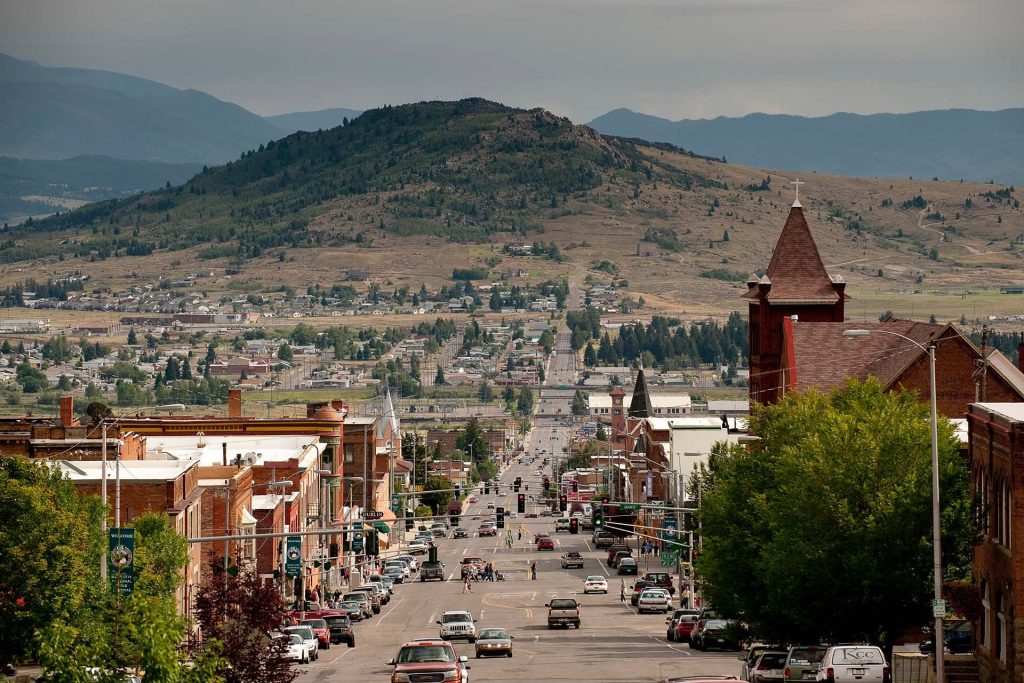
Established in 1864 as a mining camp in the northern Rocky Mountains on the Continental Divide, Butte experienced rapid development in the late-nineteenth century, and was Montana’s first major industrial city. In its heyday between the late-nineteenth and early-twentieth centuries, it was one of the largest copper boomtowns in the American West. The city covers 718 square miles, and has a population of almost 34,500, making it the 5th largest city in the state!
The Butte Hill and its huge copper deposits was once known as “the richest hill on earth.” Today Butte’s colorful history can be seen in its preserved Victorian uptown business district and stately mansions. The Butte Trolley tours historic sites in the summer. Activities and guided services for this area include ranch vacations, natural hot springs, hiking, boating, resort cabins, river floats, hunting, fishing, horseback rides, golf, cross-country and downhill skiing, and snowmobiling.
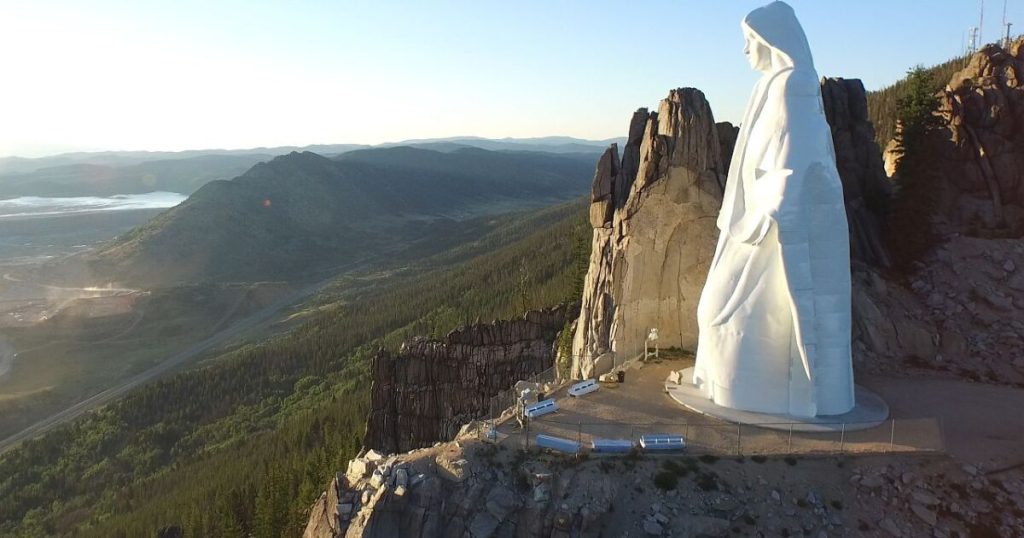
Butte boasts one of the nation’s largest National Historic Landmark Districts with over four thousand structures around the city. History lovers can take a ride on the Old Trolley No. 1 for tours of historic sites, or visit one of Butte’s many museums: the Copper King Mansion, the Mai Wah in the heart of Butte’s old Chinatown, the Dumas Victorian Brothel Museum in the once notorious Venus Alley, the Mineral Museum, and the World Museum of Mining with its twenty two acres of outdoor and indoor displays.
For unsurpassed views, visit the Granite Mountain Mine Memorial for a panoramic view of Butte and the nearby mountains; the viewing stand at the Berkley Pit, Butte’s massive open-pit mine; or take a bus for a close-up view of the towering Our Lady of the Rockies, a 90-foot statue of the Virgin Mary that looks down on Butte from the Continental Divide. Outdoor enthusiasts can visit the nearby Sheepshead Recreation Area, Maney Lake, and Elkhorn State Park for hiking, boating, river floats, and fishing opportunities.
8. The Lewis and Clark Caverns (Whitehall) – 158 miles (approx. 2 hour and 30 minute drive)
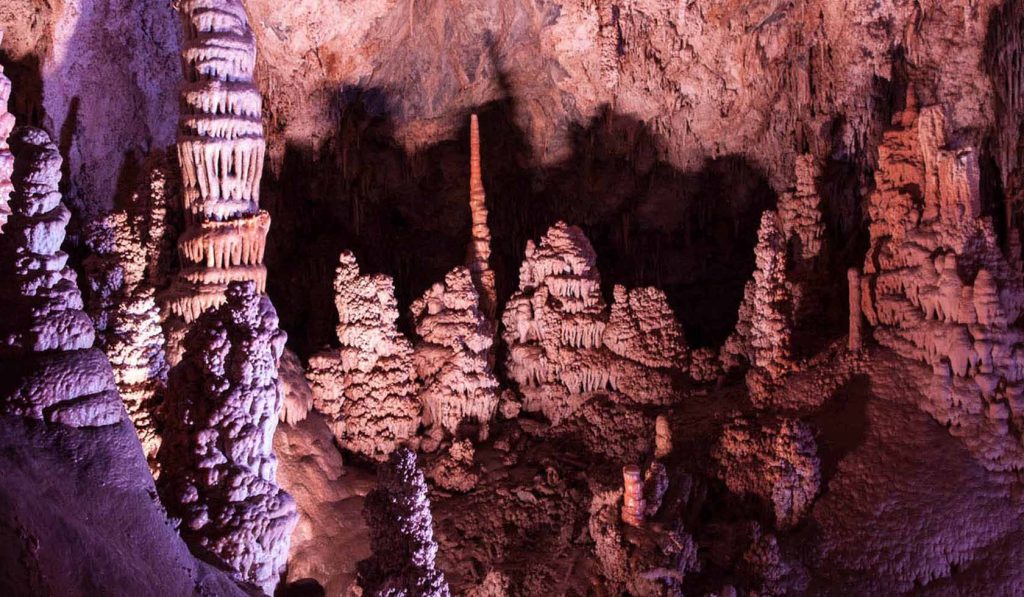
Lewis and Clark Caverns State Park is Montana’s first and best-known state park featuring one of the most decorated limestone caverns in the Northwest. Naturally air conditioned, these spectacular caves lined with stalactites, stalagmites, columns, and helictites are electrically lighted and safe to visit. Above ground, a self-guided nature trail provides opportunities to understand the natural surroundings.
Also available is 10 miles of hiking trails, 40-space campground, 3 camping cabins, tipi, picnic sites, firewood, flush and vault toilets, showers, group use area, RV dump station, grills/fire rings, picnic tables, trash cans, drinking water, and a food/beverage and gift concession.

The park is open year around, but guided tours are conducted daily only between May 1 and September 30. The park has two visitor centers, interpretive displays and evening programs presented during the summer months. The site encompasses 3,000 acres at an elevation of 4,300 and 5,600 feet. Golf course and museums are located nearby in Three Forks and Whitehall.
9. Philipsburg – 158 miles (approx. 2 hour and 45 minute drive)
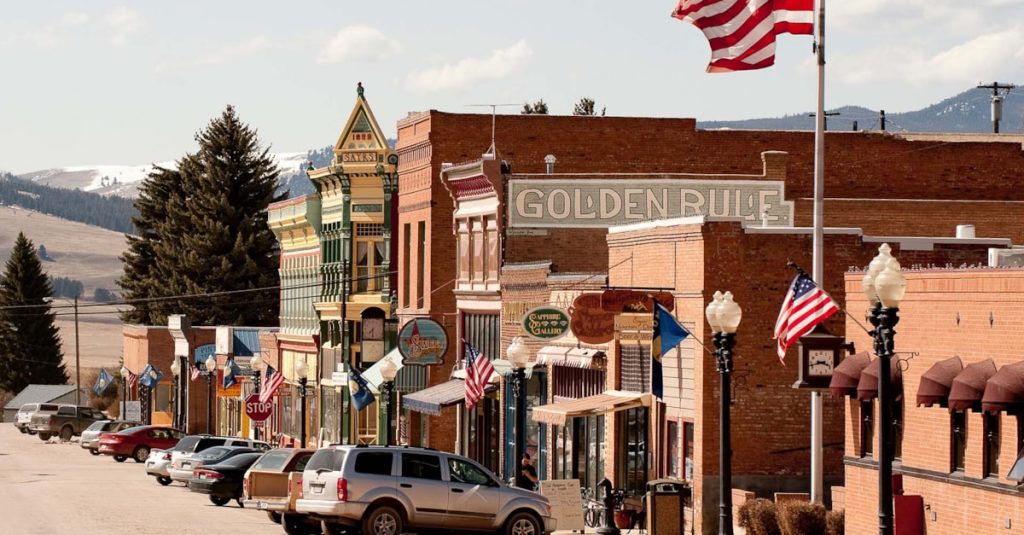
This 1890s mining town has been renovated into National Historic Business District. Quaint shops, walking or auto tours and guides into the ghost towns are available. Georgetown Lake is 10 miles from Philipsburg and offers a beautiful mountain setting, fishing, boating and camping. Try some prospecting at the Sapphire Gallery or visit the Granite County Museum and Mine Exhibit, home of the Ghost Town Hall of Fame. Located nearby is Discovery Ski Area with beautiful views and uncrowded slopes.

The Philipsburg area is a geologically rich with large mineral deposits, over 75 named lakes and reservoirs and is full of interesting history. In the heart of Montana sapphire country, Philipsburg boasts several opportunities for panning for your own Montana sapphires at any one of several shops in town, or exploring old Montana silver and gemstone mines in the surrounding mountains and ghost towns.
10. Missoula – 165 miles (approx. 2 hour and 45 minute drive)
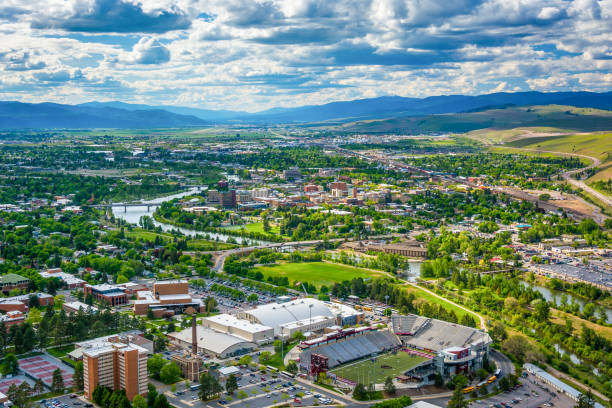
Known as the “Garden City” for its dense trees and lush green landscape, Missoula is nestled in the heart of the northern Rockies where five valleys converge, and is the 2nd largest city in the state. Missoula is a center for education, medicine, retail and the arts. Located at the base of Mount Sentinel and the banks of the Clark Fork River is The University of Montana. The 200-acre campus is one of the most beautiful in the nation and is home to 12,000 students. Fly fishermen, rafters, kayakers and canoers thrive on the nearby waters.
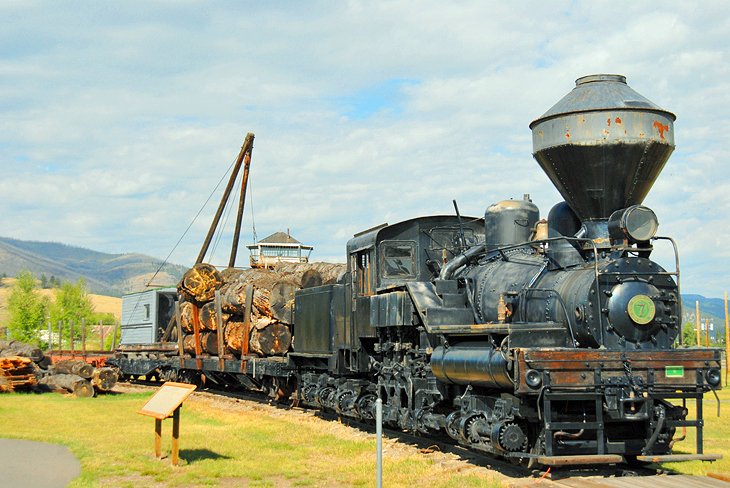
Missoula has no shortage of museums, including: the Missoula Art Museum, the Rocky Mountain Museum, the Montana Natural History Center, the Historical Museum at Fort Missoula, the Montana Museum of Art and Culture, the National Museum of Forest Service History, the Museum of Mountain Flying, the Montana Museum of Work History, the Boone and Crockett Club, the Holt Heritage Museum, and the Miracle of America Museum. Visit the Lolo National Forest and catch a show at the Wilma Theater. Also be sure to check out the Rocky Mountain Elk Foundation and the Rattlesnake National Recreation Area.
11. Livingston – 170 miles (approx. 3 hour drive)
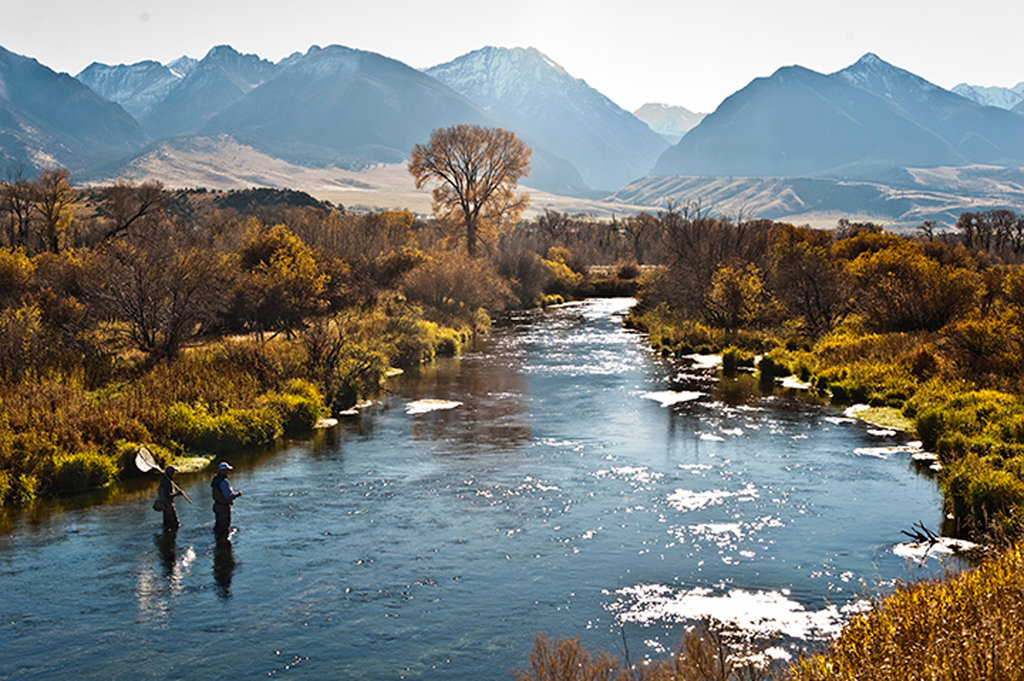
Livingston is the historic train town from the late 1880’s that will keep you coming back. Livingston was the “Original Gateway City to Yellowstone National Park,” but now it’s where adventure, beautiful scenery and authentic friendly folk await you at the edge of the Yellowstone River. The town is surrounded by four beautiful wild mountain ranges that offer an abundance of outdoor activities year round.
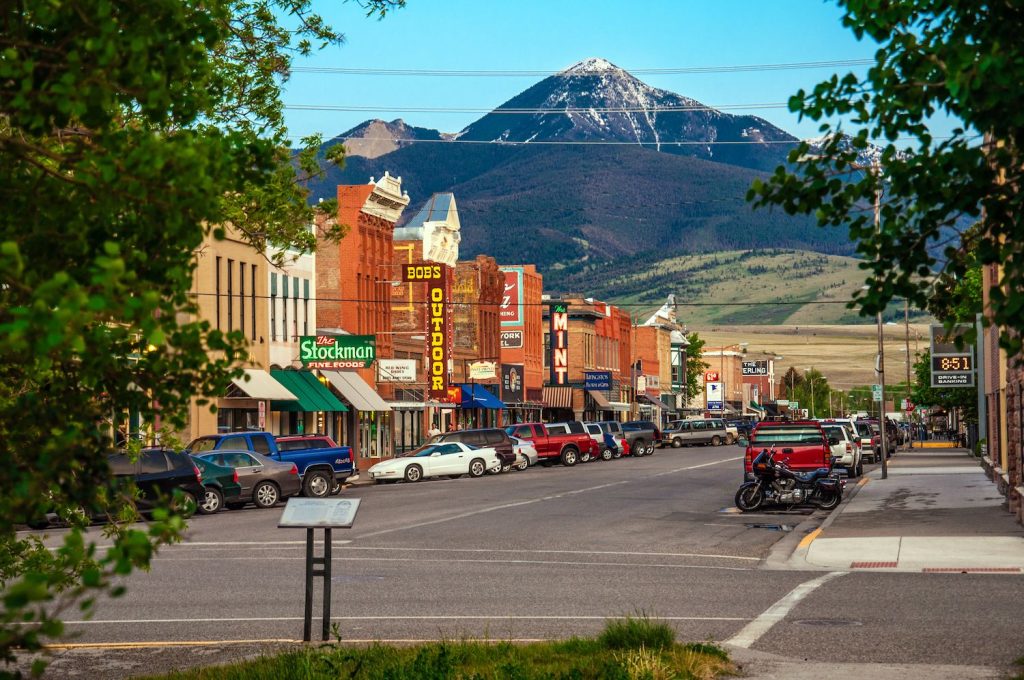
Enjoy some fly fishing, dogsledding or cross-country skiing, horseback riding, river rafting or just take it easy at their many museums, art galleries and restaurants. Take a trip to the Yellowstone Gateway Museum, the Livingston Depot Center, and take a stroll down Main Street.
12. Anaconda – 179 miles (approx. 2 hour and 45 minute drive)
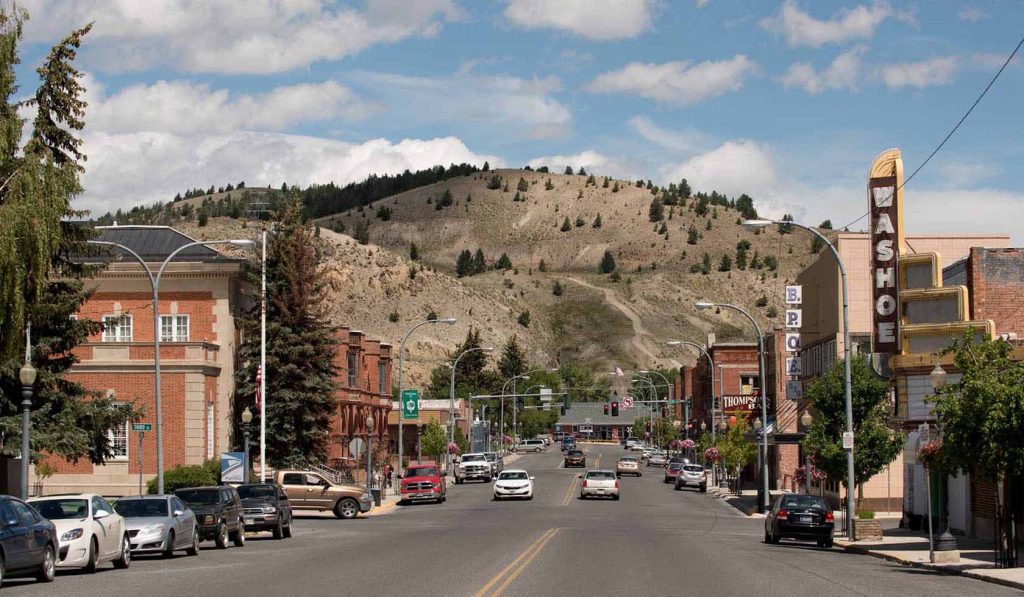
Humbled by the towering Pintlers, nestled in a mile high valley in the Deer Lodge National Forest, Anaconda presents unsurpassed recreational opportunity just outside town, in any direction. The town sprang up when the giant Anaconda Copper Mining Company of Butte needed a smelter for its vast amounts of copper ore. Smelting operations were suspended in 1980, but “The Stack” remains an important landmark and state park. Smoke Stack Stater Park allows visitors to view the 585 ft. tall structure from a distance.
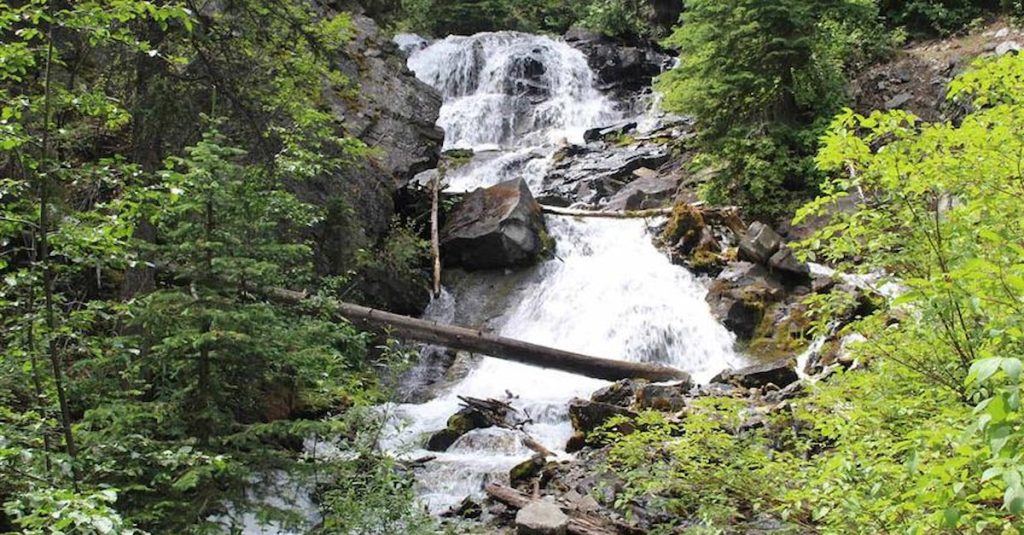
Also in Anaconda, the Lost Creek State Park offers incredible views and various outdoor recreational activities. For more fun in the outdoors, visit the Washoe Park, visit the Old Works Golf Course, or take a trip to a local hotspot, Georgetown lake. Other places to visit include the Washoe Theater, the Washoe Park Trout Hatchery, and the Copper Village Museum and Arts Center. Hop on a Historic Bus Tour to tour the town and learn it’s history.
13. Bozeman – 186 miles (approx. 3 hour drive)
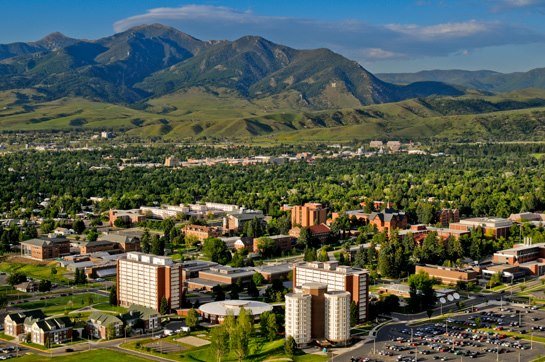
Bozeman is called “the most livable place” for good reason, and is the state’s 4th largest city. Enjoy world-renowned fly fishing, dramatic mountains for hiking, mountain biking, rock climbing, skiing, hunting, and backcountry exploring, Yellowstone National Park, and impressive wildlife. When you are ready for a more city experience, dive into Bozeman’s thriving arts and culture communities, ranging from main street festivals, farmers markets, cultural centers and museums to symphonies, theaters, and art galleries.
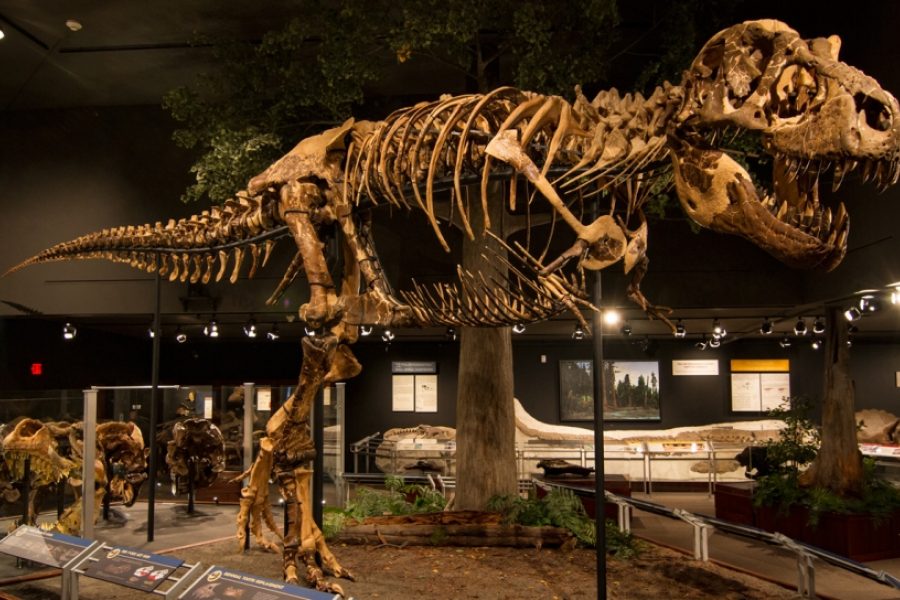
Museums include the Museum of the Rockies, the Gallatin History Museum, the American Computer and Robotics Museum, the Bozeman Art Museum, the Montana Science Center, and the Little Bear School House Museum. Take a trip to downtown Bozeman for some shopping, or visit the Montana Grizzly Encounter to get “up close” to rescued grizzly bears.
14. Virginia City – 207 miles (approx. 3 hour and 25 minute drive)
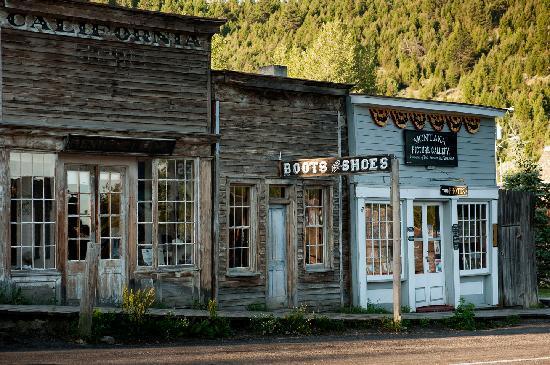
Virginia City was born with the discovery of gold in Alder Gulch in 1863. A boom town of the post Civil War era, Virginia City served as the Montana Territorial Capital for 10 years, until the gold ran out. Just a mile away lies Nevada City, a western town created from a collection of buildings from other ghost towns. Both towns have been largely restored and preserved and have become living examples of the real Old West. One hundred fifty buildings have been certified authentic by the Montana Historical Society. Original buildings, dating from the Territorial days, are filled with merchandise and implements used when gold camps flourished in the West. Boardwalks, mechanical music machines, a penny arcade, antique automobiles and even a two-story outhouse add to the Old West atmosphere.
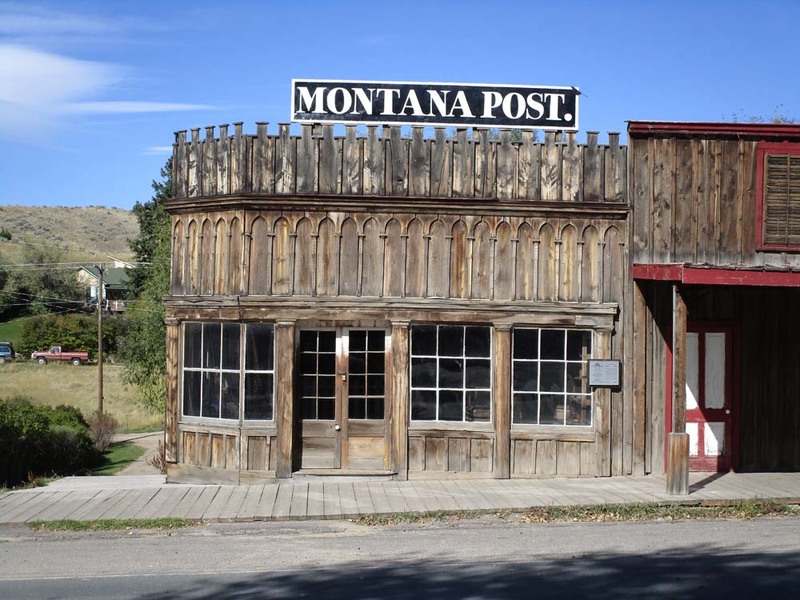
This section of Gold West Country offers many opportunities to relive the adventure of gold rush days. Virginia City’s Grand Victorian Ball for Peace 1865 is held in August. Events include a Grand Ball where guests attend in period costume. The Opera House features the Virginia City Players’ productions in the style of 19th-century. Virginia City offers the oldest continuously operating summer stock theater west of the Mississippi. Check with the Chamber of Commerce for a schedule of shows. In Virginia City, you can shop, dine and sleep without leaving the atmosphere of the 1860s. Dine in the Star Bakery and bend an elbow in the Bale of Hay Saloon. Relax with a libation at Montana’s first brewery, the H. S. Gilbert Brewery, and enjoy a performance of the Brewery Follies Players. Modern accommodations in a charming, 19th-century atmosphere are available. You will find fascinating nuggets of history and memories to treasure.
The majestic Madison River Valley, just west of Virginia City, features some of the world’s finest trout streams, as well as a beautiful mountain backdrop.
15. Flathead Lake – 216 miles (approx. 3 hour and 40 minute drive)
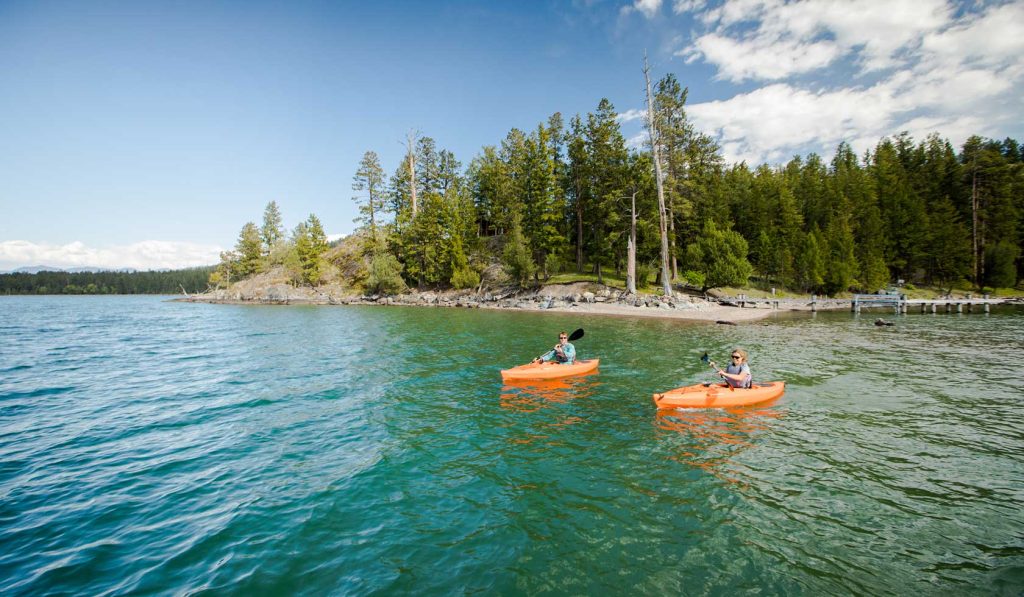
Flathead Lake is the largest natural freshwater lake west of the Mississippi in the lower 48 states, with over 200 square miles of water and 185 miles of shoreline. The southern half of Flathead Lake is within the boundary of the Confederated Salish and Kootenai Tribes Flathead Reservation. Recreationists must purchase a tribal recreation permit.
Montana Fish Wildlife and Parks maintains thirteen public access sites around the lake. These sites include: Sportsmans Bridge, Somers, Big Fork, and Juniper Beach fishing access sites; Wayfarers, Woods Bay, Yellow Bay, Finely Point, Walstad Memorial, Big Arm, and Elmo state recreation areas, which have toilets, boat launch, camping, swimming and picnic facilities; and West Shore State Park, located twenty miles south of Kalispell on Highway 93. Also located along the west shore near the Big Arm is Wildhorse Island, a 2,165-acre state park. The park is accessible only by boat and is a public day use and picnic area only, no overnight camping. Recreation on and around the lake includes: sailing, power boating, waterskiing, swimming, fishing, picnicking, and camping.
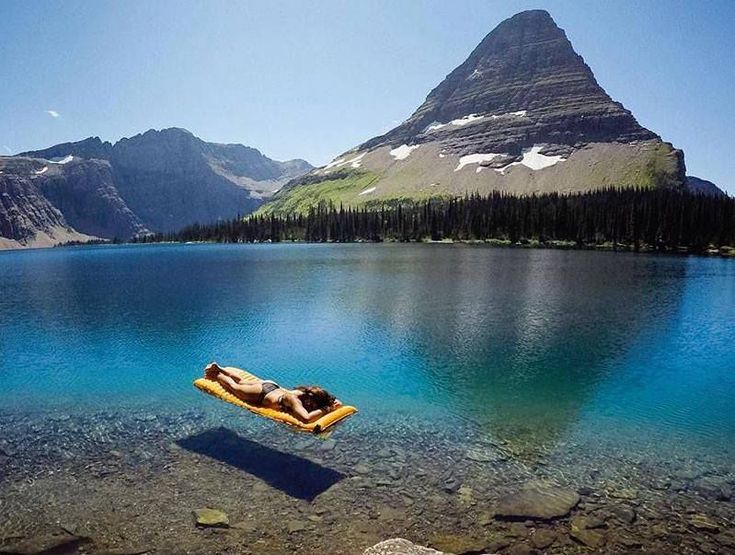
In the summer, roadside stands along the east shore offer a variety of locally grown cherries, apples, plums, and other fruits. There are numerous motels and rental cabins in addition to public campgrounds scattered all around the shoreline. The major population centers around the lake are Kalispell, Bigfork, and Polson, all of which offer a complete variety of groceries, supplies, and information.
16. Billings – 219 miles (approx. 3 hour and 40 minute drive)
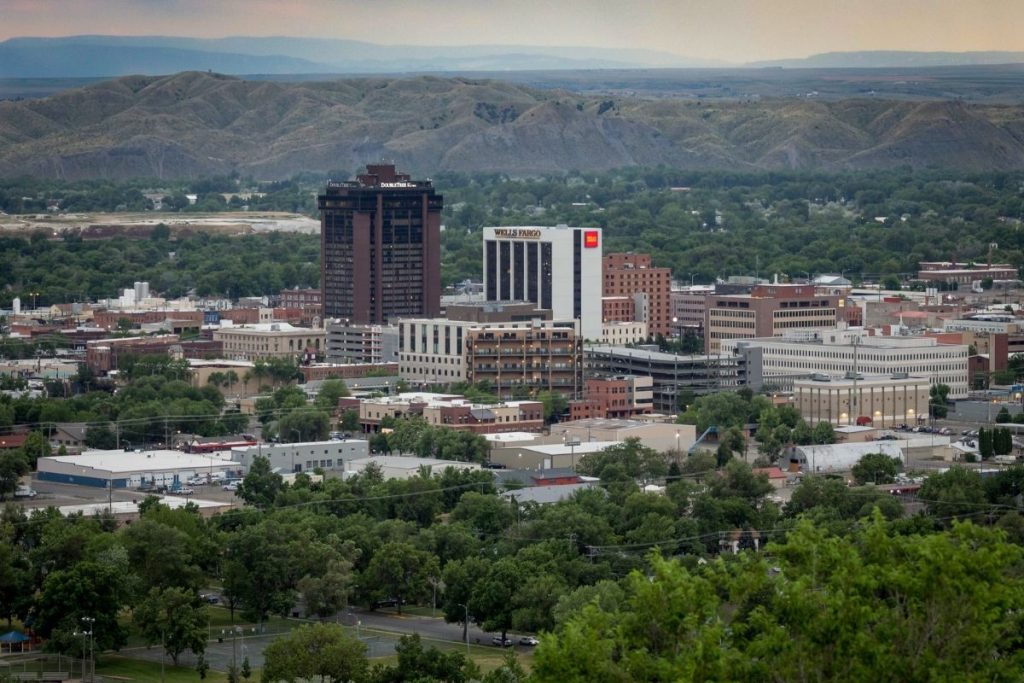
Shaped by the Yellowstone River and sheltered by the Rims, Billings is a regional hub for commerce, and is the largest city in the state with just over 117,000 residents. Whether you’re looking for bronco busting rodeo action or the relaxation of fishing or hunting, you’ll be in good company around Billings. Watch Montana’s wildlife by grabbing your binoculars and heading to the plains or hiking in the mountains that surround Billings. Use Billings as a central point to the best western attractions, events, hospitality, shopping and cuisine.

For museums, Billings is home to the Yellowstone Art Museum, the Moss Mansion Museum, the Western Heritage Center, and the Yellowstone County Museum. Get some fresh air in the city by visiting Lake Elmo State Park, or Pictograph Cave State Park, where you can find ancient rock paintings dating back to over 2,000 years ago. Just outside of town you can find Pompey’s Pillar, a sandstone pillar over 200 years old with Captain William Clark’s signature carved near the base. Visit ZooMontana or the Yellowstone Wildlife Sanctuary to view animals found in the wild. Finally, catch a show or rodeo at the MetraPark Arena.
17. Big Sky – 219 miles (approx. 3 hour and 45 minute drive)
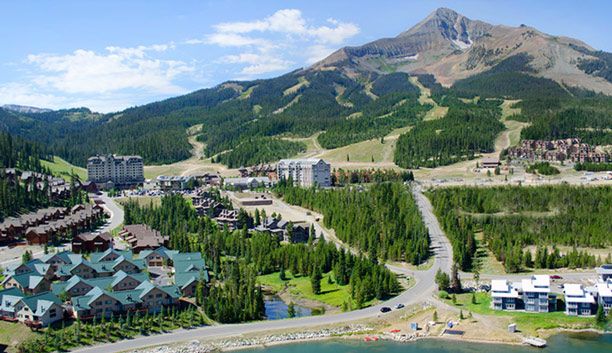
There’s a lot more to Big Sky than the endless views and wide-open skies that give this Montana destination its name. Big Sky is an R-Destination. Come Recreate, Recharge, Rejuvenate, Reboot and Return home Refreshed. Big Sky offers unlimited access to outdoor recreation: the wet and wild whitewater experience, blue ribbon trout streams, backcountry hikes, meandering wildlife and widespread wildflowers. It’s made of a welcoming community filled with people who have chosen Big Sky, for the week or forever.
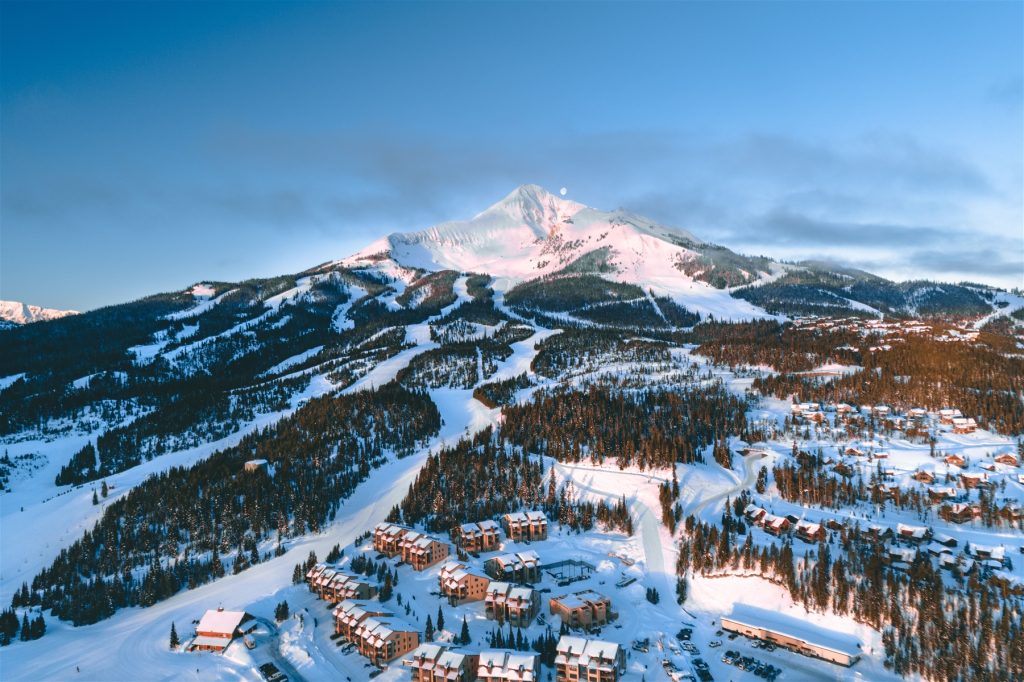
This is an area full of adventure, and vibrant with entertainment options to suit a variety of individuals and groups, from families to businesses, to all-guys or gal’s trips, meetings, family reunions, romantic getaways, and weddings. If that isn’t enough, Big Sky is your gateway community to Yellowstone National Park adventures, where geologic wonders and rugged nature are in a summer or winter day’s visit with the West Entrance to the Park accessible to the south in just under an hour. In winter, Big Sky is home to the BIGGEST SKIING IN AMERICA © with over 5,800 acres of skiable terrain spread across four mountains, 4,350 vertical feet and 85 km of award-winning Nordic trails.
18. Whitefish – 220 miles (approx. 3 hour 45 minute drive)
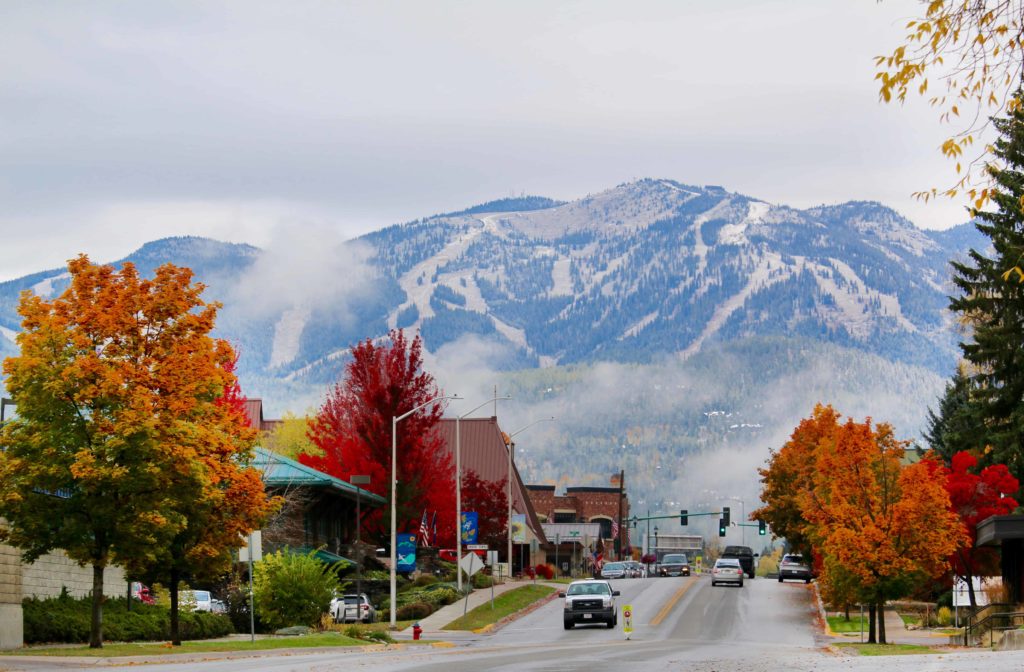
Named one of the “Top 25 Ski Towns in the World” by National Geographic, Whitefish is located on the shores of Whitefish Lake and at the base of Big Mountain-home to Whitefish Mountain Resort. A short jaunt to Glacier National Park, Whitefish is a year-round destination with plentiful attractions and a mixed array of shops, coffee houses, restaurants, accommodations.
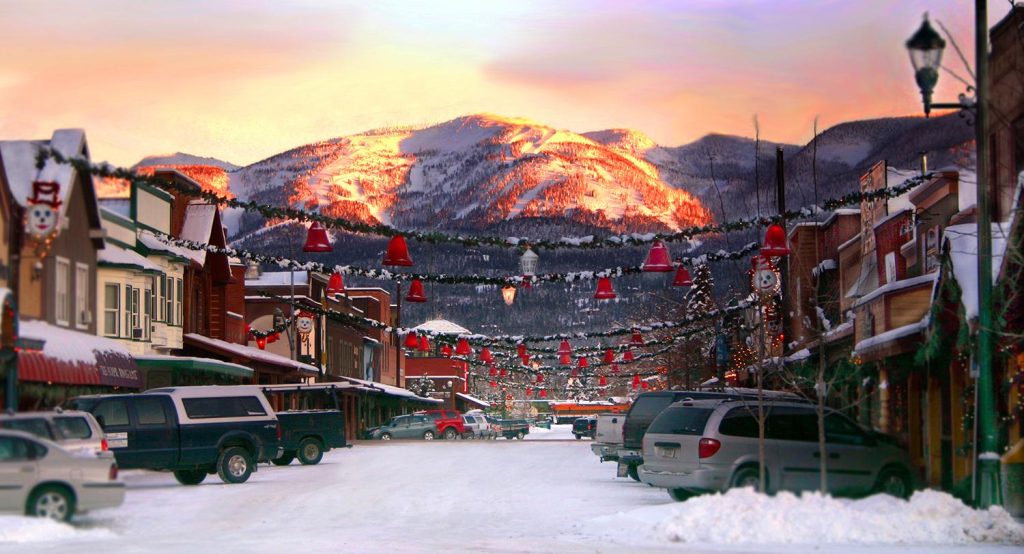
Visitors can enjoy skiing, snowboarding, hiking, biking, boating and live professional theater, as well as stellar dining. Amtrak’s Empire Builder stops daily in Whitefish, while Glacier Park International Airport is only 15 minutes away.
19. Yellowstone National Park – 225 miles (approx. 4 hour drive)
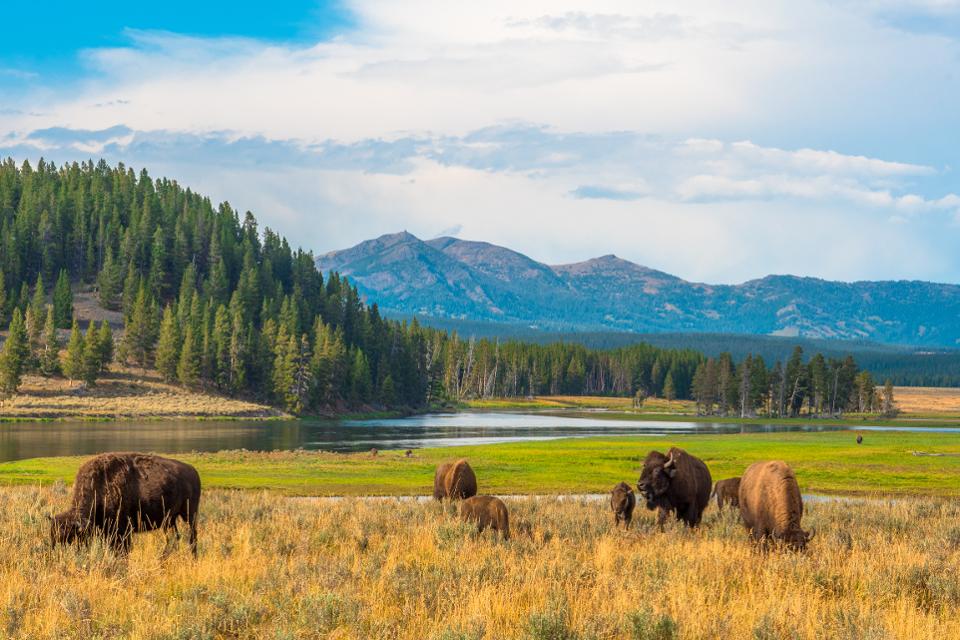
America’s first national park was set aside to preserve and protect the scenery, cultural heritage, wildlife, geologic and ecological systems and processes in their natural condition for the benefit and enjoyment of present and future generations.
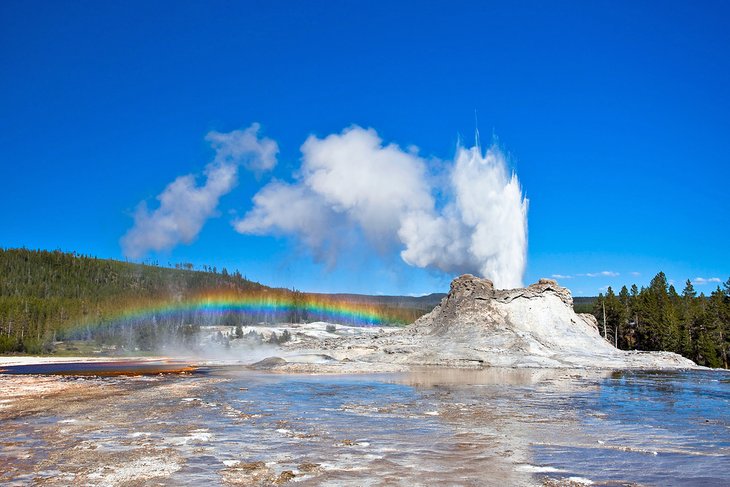
Yellowstone serves as the core of the Greater Yellowstone Ecosystem, one of the last and largest nearly intact natural ecosystems on the planet. Yellowstone has the most active, diverse, and intact collections of combined geothermal features with over 10,000 hydrothermal sites and half the world’s active geysers. The park is also rich in cultural and historical resources with 25 sites, landmarks, and districts on the National Register of Historic Places.
20. Kalispell – 227 miles (approx. 3 hour and 55 minute drive)
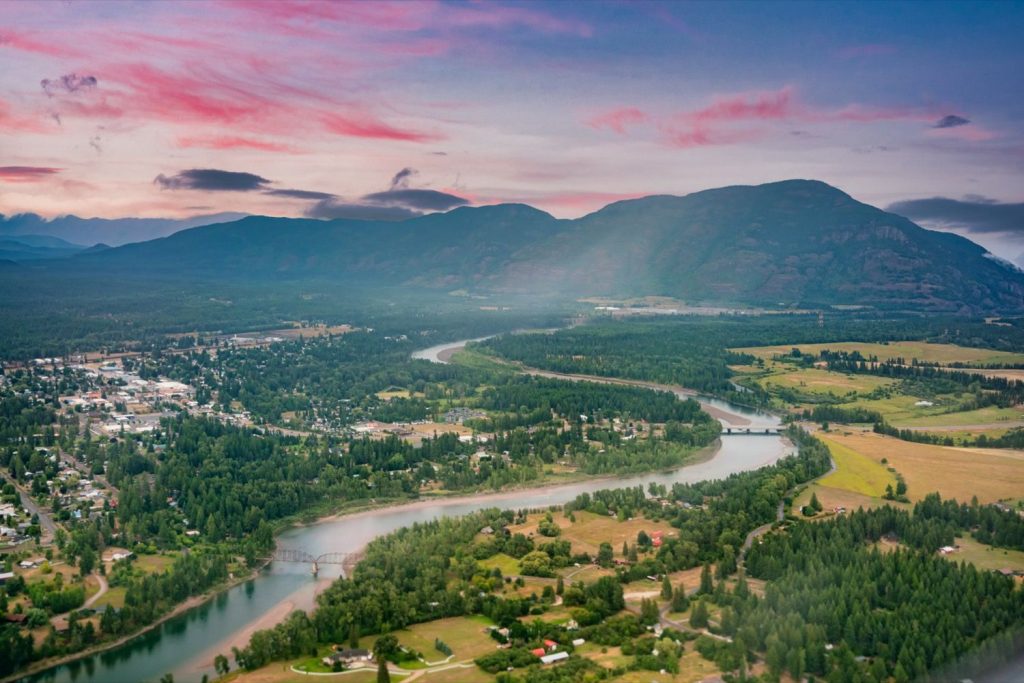
Kalispell and the Flathead Valley are home to Glacier National Park, Flathead Lake, championship golf courses, two ski resorts, unlimited trails for hiking and lakes and streams for fishing, outstanding arts and culture, charming small towns and warm western hospitality.

Other places to visit include the Hockaday Museum of Art, the Conrad Mansion Museum, and Northwest Montana History. Kalispell is also home to a state park know for stunning views, called Lone Pine State Park. Take a stroll on Main Street, visit the city parks and Flathead National Forest, or take a trip to Kalispell’s other well-known water hole, Swan Lake.








